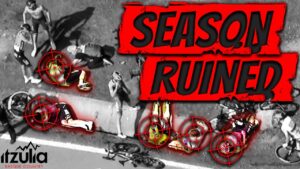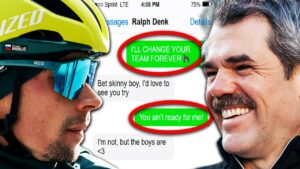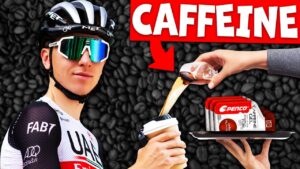Peloton’s MEGA CARB MENUS Are Unlike Anything You’ve EVER Seen with Watts
Source: Watts Youtube Channel: Peloton’s MEGA CARB MENUS Are Unlike Anything You’ve EVER Seen
Video Peloton’s MEGA CARB MENUS Are Unlike Anything You’ve EVER Seen with Watts Youtube Channel
Video Peloton’s MEGA CARB MENUS Are Unlike Anything You’ve EVER Seen with Watts YouTube Channel.
Peloton’s MEGA CARB MENUS Are Unlike Anything You’ve EVER Seen | Watts
In the world of professional cycling, nutrition plays a crucial role in determining the success of a rider. As races become longer and more intense, the need for a carefully planned and strategically executed diet becomes more apparent. Riders competing in events like the Tour of Flanders and Paris-Roubaix burn an astonishing amount of calories, often exceeding 6,000 in a single race. Without the right fuel, it would be nearly impossible for these athletes to endure the grueling demands of the cobble classics and monuments.
The nutritionists of each team play a vital role in ensuring that their riders are properly fueled for the challenges that lie ahead. The increased duration and stress of modern races means that riders require an enormous amount of carbohydrates to remain competitive. According to a nutritionist at Jaco Alula, getting the feeding wrong could mean getting dropped from the race. This is why riders dedicate 72 hours to loading up on carbs during the Cobblestone Holy Week, leading up to races like the Tour of Flanders and Paris-Roubaix.
Carb loading is a strategy that prioritizes carbohydrates over proteins and fats in order to efficiently fuel the body for high-power efforts during races like the Qua N’t and Carrefour de l’Arbre climbs. Riders like Vanderpool and Peterson carefully increase their carb intake in the days leading up to big races, combining easy on-bike rides with heavy in-kitchen workouts to maximize their glycogen stores for the intense efforts ahead. The preparation period for these races is longer, typically starting 48 hours before the race to achieve glycogen super compensation.
The recommended carbohydrate intake for athletes preparing for tough endurance activities is around 10 to 12 grams per kilogram of body weight. For a rider like Vanderpool, who weighs around 76 kilograms, this could mean consuming up to 990 grams of carbs the day before a race. This translates to roughly 3 kilos of cooked white rice or pasta, providing a substantial source of energy for the demanding challenges ahead.
While rice and pasta are staple carbohydrate sources for riders, team chefs also get creative in crafting delicious and nutritious meals. Low-fiber, high-carb ingredients are incorporated into five-star menus, offering riders options like sourdough pancakes, fruit smoothies, vegetable soups, and of course, large servings of pasta and rice. Rice has become the preferred carbohydrate for many riders due to its density, gluten-free nature, and ease of digestion, making it ideal race food.
The importance of pre-race breakfast cannot be understated, as it serves as the foundation for fueling the body for the race ahead. Riders will typically consume four times their body weight in grams of carbohydrates at breakfast alone, providing the necessary energy to sustain them throughout the race. While rice remains a popular choice, other options like oatmeal, bread, and pancakes are also available depending on the rider’s preference.
During races, when there is no time for real food, modern sports nutrition plays a key role in fueling riders to their maximum potential. Gels and drinks that are easy on the stomach and packed with carbohydrates allow riders to consume the necessary energy without causing gastrointestinal issues. Athletes like Vanderpool can consume upwards of 120 grams of carbs per hour during intense races like the Tour of Flanders, showcasing the evolution in fueling strategies over the years.
Post-race recovery is just as crucial as pre-race preparation, with riders focusing on replenishing their glycogen stores and aiding muscle recovery. Drinks like cherry juice, gummies, dates, soda, and whey protein shakes are common choices for riders to kickstart their recovery process. Team chefs carefully prepare meals designed to refuel the rider’s bodies and entice them to eat, despite feeling less hungry after a grueling race effort.
In conclusion, the world of professional cycling has embraced modern sports nutrition to fuel riders for the demands of intense races like the Tour of Flanders and Paris-Roubaix. With a focus on carbohydrate loading, strategic pre-race breakfasts, and efficient fueling during races, riders are able to push their bodies to the limit and achieve peak performance. The careful planning and execution of nutrition strategies by team chefs and nutritionists play a key role in determining the success of riders in these challenging events.
The opinions expressed in this space are the sole responsibility of the YouTube Channel Watts and do not necessarily represent the views of CicloNews.










